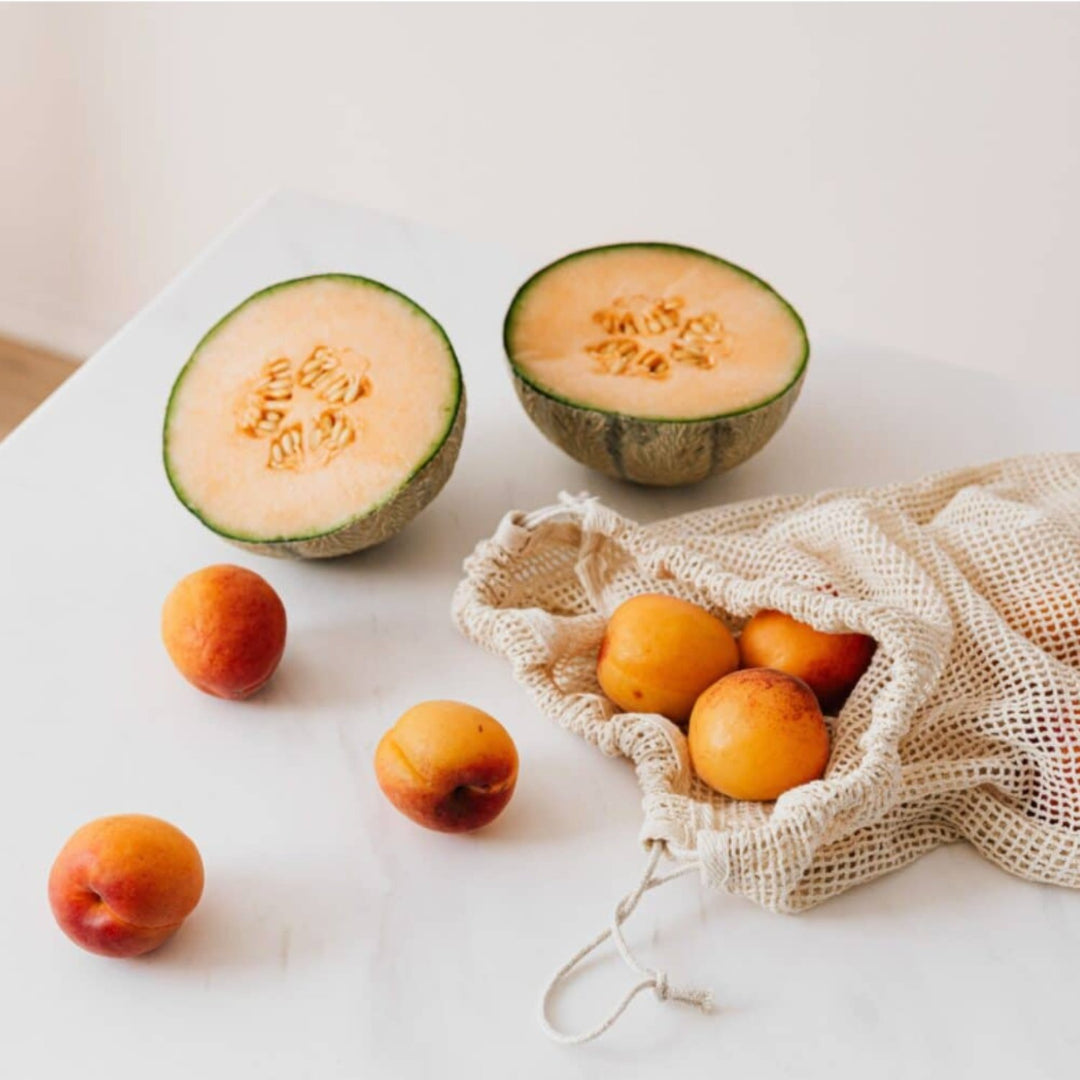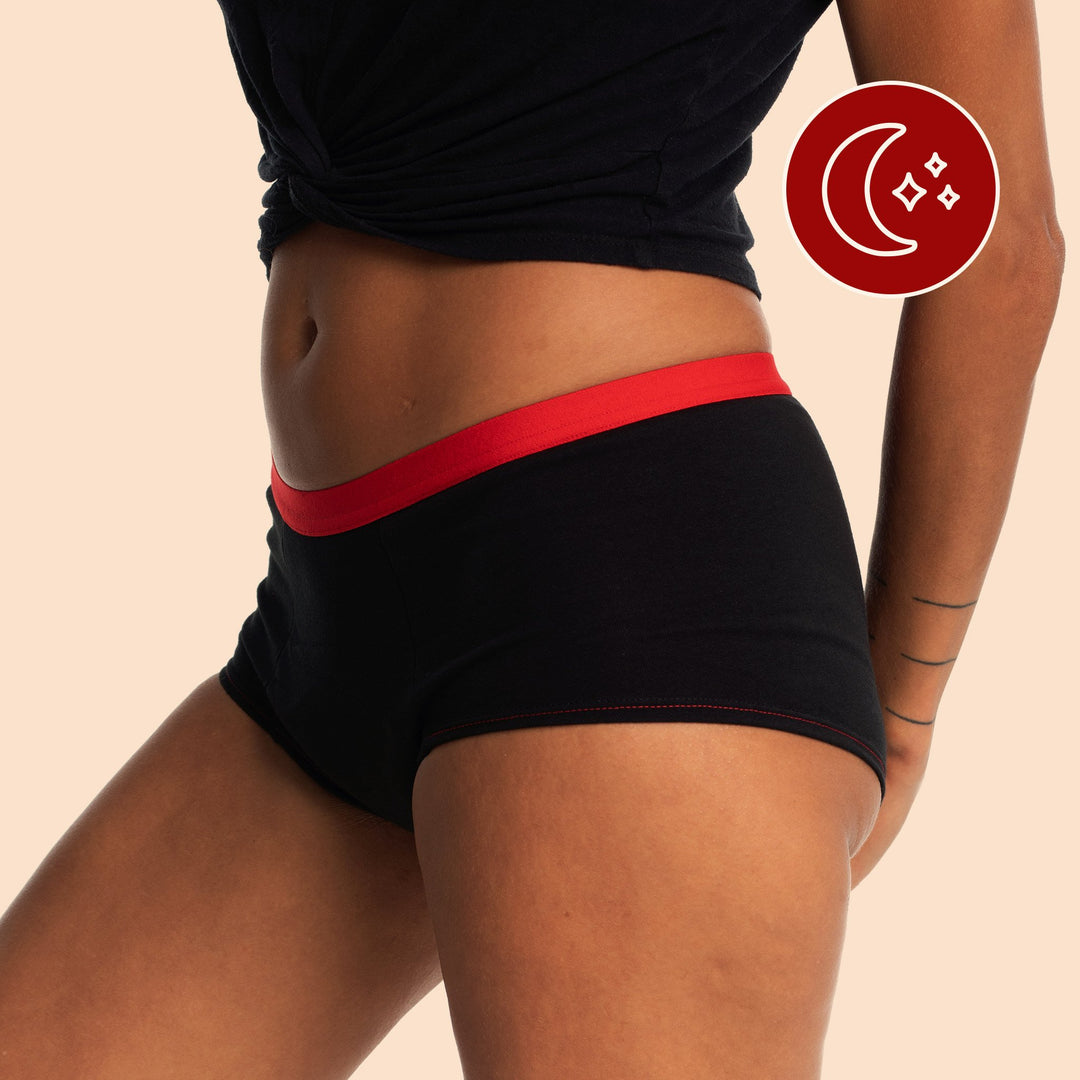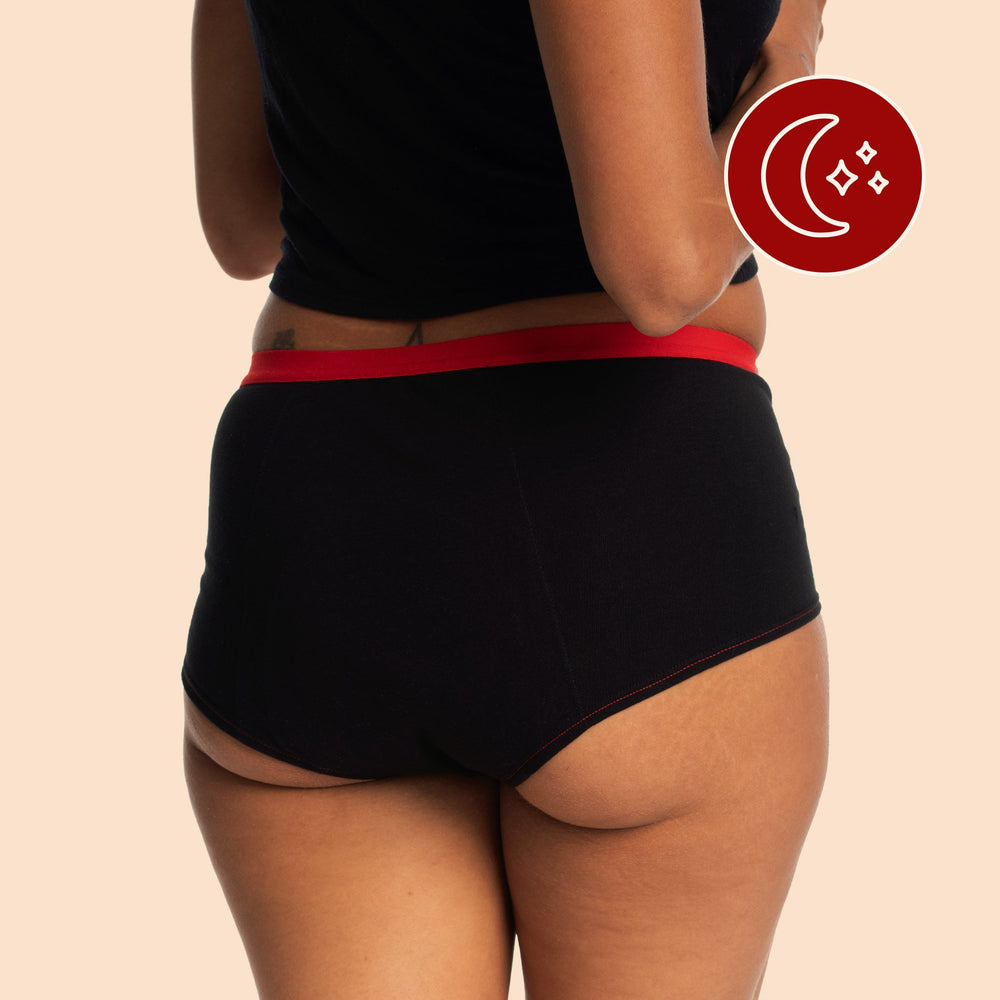
Hold on tight, because I'm about to give you some huge news. This is the kind of news that'll probably change your life (at least once a month).
We're all capable of managing our menstrual flow and just flushing it down the toilet. Yep, you read that right! You can have your period without menstrual protection (at least partially)! We just need to learn about our bodies and our cycles.
When I first heard this news, I thought, "Okay, but why hasn't anyone told me this before?" Well, you know: the patriarchy, menstrual taboos . . . that whole thing. And what's it been hiding from us? Instinctive free flow!
Melissa Carlier, a true pioneer in research on instinctive free flow, has shared with us her knowledge of this ability we all share. Here are the secrets -- well kept, I believe -- to accessing this potential. It may seem like magic, but really it's purely physiological.
What's instinctive free flowing?
Instinctive free flowing (IFF) is a way to consciously and voluntarily manage your period by releasing your blood in the toilet.
Just as we're able to know when our bladder is full and when to urinate, we also have the ability to acquire menstrual continence. It's simply a matter of reconnecting with our body's sensations (blood flow, uterine contractions, etc.) to determine when to go to the bathroom to release our blood.
"It's funny. In our bodies, everything is really efficient and well done . . . except menstruation! Which is weird! How can it be possible that everything is autonomous except for menstruation when it's the result of an extremely complex machinery that's the culmination of our reproductive capacity." - Mélissa Carlier
IFF is a re-education. It is a way to regain autonomy over our bodies.
What IFF is NOT
There are tonnes of misconceptions surrounding IFF. And that's because we just don't talk about it much!
It's important to know that IFF is NOT a way to control blood flow by holding it back with the force of the perineum. Contrary to what you might think, women who control their blood don't spend their days with a tight perineum. And anyway, tightening the perineum is useless and physically impossible.
We don't hold the blood inside us -- we get rid of it at the right time.
FLI is based on sensory, psychomotor, and intuitive learning ✨
An innate power we don't talk about
It's hard not to wonder why we were cut off from a very simple means of having a more comfortable period.
The patriarchy, obviously
It's not that our bodies are dysfunctional; it's that we've been made to believe that they are. We (all people born with a uterus) are conditioned to believe we're insufficient, to be over-medicated, and to have to depend on the outside.
In our thoroughly patriarchalized Western societies, we're taught that being a woman is more of a handicap than a superpower. We quickly come to suffer our cycles rather than honour them. As soon as we hit menarche, we're put on birth control without asking too many questions, and bam! We don't really understand how our bodies work. Not to mention all the shame and taboos that surround menstruation, which push us to make it invisible.
It's impossible to get to know yourself without daring to explore, without being curious, without loving. Good news: if you're reading this article, you're probably part of the new paradigm! We're reclaiming our cycles. Understanding the bug in the system. Uniting to better radiate in all our wholeness. Yay!
An internalized menstrual pattern
Imagine a society in which Pampers has had a monopoly for a very long time, and so children are no longer taught to go to the bathroom! That's what happened with menstruation. Let me explain.
In societies that don't have diapers or can't afford them, children learn to be continent at a very young age. In the West, it happens later and later. We've shifted the age of continence because we've democratized the use of diapers.
In menstruating people, menstrual protection has been democratized from menarche to menopause. There's no menstrual education. We don't explain the physiology of your period (because, hey, we don't even know how it works!). From our first moons, we internalize that having our period means changing pads every 3 hours. That's it!
It's a very hard pattern to deconstruct because we don't even see it! How can we get out of it if we don't know that there's something else? That's why I say this loud and clear, people: THERE IS SOMETHING ELSE.
When I discovered IFF, it was like realizing the Earth was round after spending years thinking it was flat!" - Mélissa Carlier
First things first: How does menstruation work?
Okay, a little menstruation 101. Because you can't understand the IFF method without going back to the basics.
A quick reminder: The inner layer of our uterus (endometrium) thickens with each cycle in anticipation of an embryo. In the absence of fertilization, the endometrium is evacuated: this is called menstruation.
This endometrium isn't released all at once; it detaches in 3 to 7 days. It'll be released thanks to the contractions of the uterus. Between each contraction, there's a rest phase (fortunately!).
I can already hear you saying: "Oh, but if I have a contraction, I have to run to the bathroom to flush!" Nope! The time between the contraction and when the blood comes out can be 30 minutes to an hour. There's no emergency.
Why does it take time for blood to flow from the uterus to the vulva?
- The blood flows in phases: Surprise, surprise! The blood doesn't flow continuously like an open faucet (you can notice this when you're wearing period undies).
- The blood chills at the entrance of the cervix: At first, the blood is lodged in small pockets at the entrance of the cervix, which are called vaginal fornix. It doesn't go directly down to the vagina.
- The blood is retained naturally by the shape of the vagina: We're used to imagining the vagina as an empty, smooth slide. But actually, it's made up of two flexible walls. They're stuck together, and the blood has to find its way through.
- The blood is also slowed down by the vaginal folds: They're like speed bumps in our vagina that prevent the blood from flowing at full speed (hey, we got speed limits in there!).
- The tilt of our uterus slows down the flow of blood.
- The texture of the blood isn't liquidy: Unlike urine, which flows like water, menstrual blood is thick and viscous and therefore flows more slowly.
All these physiological elements tell us that we're created to control our flow (let's observe a quick moment of silent respect for nature!).

How can you practice IFF?
Step 1: Throw out toxic beliefs
How can we access this intrinsic capacity if we refuse to properly acknowledge the physiological phenomenon we experience every month?
In order to start practicing, it's essential to (re)learn to welcome our menstruation with more of a gentle heart. If you have a vision of your blood that's dirty and impure, you can try to integrate these positive ideas:
- My menstrual blood is a rich and precious liquid
- My period creates life
- I can connect with my menstrual cycle instead of being subjected to it.
In the same vein, if you have any misconceptions about IFF, now's the time to deconstruct them. Check out what's going on inside you: What was your first reaction when you heard about these mystical women releasing their blood in the wild? (By the way, IFF is for all menstruating people; it's not reserved for an elite group of ultra-spiritual women who walk barefoot in the forest 😉).
Take these beliefs one by one, welcome them, and understand that they're not truths. A belief is strong when you can't see it. This is where menstrual education comes into play, since to defuse a belief, you need access to its counter-belief. In this regard, we can only recommend "The Guide to Instinctive Free Flowing" by Melissa Carlier. Reading this IFF bible will make you completely change your discourse from "my body isn't capable" to "my body has everything it needs to do it, and I have the knowledge to prove it."
Step 2: Learn to get in touch with your inner senses
What do you feel when your uterus contracts?
- A cramp
- A heaviness in the lower back
- Tension in the lower abdomen
- A feeling of discomfort
When you feel these symptoms (they can vary for each person), you know that part of your endometrium is starting to descend, and you have more or less 30 minutes to go to the bathroom. Pretty simple, isn't it?
Step 3: Figure out the right time to go to the bathroom
This can be any number of moments:
- Right after a contraction
- When your instincts tell you
- When external factors contribute (for example, after you've been sitting in front of your computer for 2 hours, you've probably got a lot blood accumulated inside, so just get up to go to the bathroom and release the fruit of your uterus)
Step 4: Learn how to evacuate the blood
- The right position: Put your feet a little higher (for example on a small stool) so that your knees are above your pelvis. This position facilitates the flow of blood and the relaxation of the perineum.
- Breathing: You don't push; you exhale. Exhaling brings up the perineum and allows the blood to flow more easily.
- The time: Wait 10 to 15 seconds longer for blood to come down than you would urine.
A few tips for your learning journey
- Choose your menstrual protection consciously: Cups and tampons block certain information. These foreign objects prevent you from feeling the flow of blood because they put permanent pressure on the vagina. Pssst! We're not against tampons or cups. We're all for choice and being aware of our abilities.
- Wear menstrual undies at first to be zen: If you're stressed about staining your clothes, you'll get tense and produce the opposite effect!
- Accept the learning phase: Just as a child doesn't learn to be continent in two days, you'll surely need several cycles to be menstrually continent. In general, after 6 cycles, people manage to release 80% of their flow in the bathroom.
- Don't put pressure on yourself: Be kind to yourself. You can't pull on the plant to make it grow! Your perceptions will refine over time, and remember that the goal is not necessarily to get 100% of your blood out in the toilet.
- Write down what you experience during your period: To get to know yourself, a menstrual diary is your best friend.
- Go at your own pace: If reading this article makes you hear the call right away, you go girl/beautiful human! If you don't feel ready yet, you can wait until your next cycle. You're no less of a feminist or zero-waste advocate if you don't master IFF tomorrow morning! We have a lot to deal with in life already. The call will come on its own.
- Embrace your fears and remember that they don't define you: Why do you think you're afraid to start experimenting? Are you afraid of failure, staining your clothes, etc.?
- Trust yourself: Your body's smart, so dare to embody that inner power.
Free bleeding isn't a single technique. It's a set of stimuli we learn to receive that makes us know ourselves better after a while. The more people who practice it, the easier it is to access it. By taking up IFF, you may be unknowingly enabling many other women to do so.
We're all one!
Mélissa Carlier

Melissa Carlier is a physiotherapist specialized in perineal rehabilitation as well as a trainer and lecturer on instinctive free flow and modern symptothermy. She's made instinctive free flow the core of her research and has democratized the term "menstrual continence." She's driven by the conviction that this is an important revolution in the intimacy of people with uteruses.
A few resources
- Mélissa Carlier : website, Facebook, Instagram, Youtube.
- The Academy of Instinctive Free Flowing
- The Guide to Instinctive Free Flowing (FR) Melissa Carlier's book
Gentle learning! ♡
























